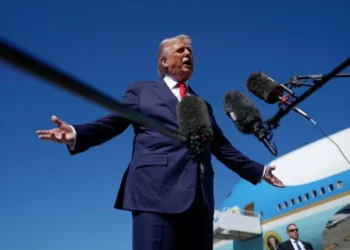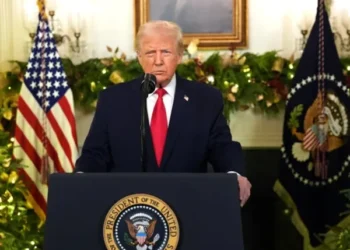Washington, D.C. – In a strongly worded response, the United States Department of Defense (Pentagon) has dismissed a series of media reports claiming that Iran’s nuclear facilities were only partially damaged during a recent U.S. airstrike. The reports, initially circulated by several prominent U.S. news outlets, suggested that only one of the three targeted nuclear sites was completely destroyed, while the other two sustained damage that could be repaired within months.
However, Pentagon spokesperson Sean Parnell and the White House have unequivocally rejected these assertions, stating that all three of Iran’s key nuclear facilities—Fordow, Isfahan, and Natanz—were completely destroyed as part of the highly coordinated military operation codenamed “Operation Midnight Hammer.”
Background: Rising Tensions Between the U.S. and Iran
Tensions between Iran and the United States have escalated in recent years, especially over Iran’s nuclear ambitions. Tehran has repeatedly claimed its nuclear program is for peaceful energy purposes, while Washington and its allies have accused Iran of developing nuclear weapons under the guise of civilian research.
Since the U.S. withdrawal from the 2015 Joint Comprehensive Plan of Action (JCPOA)—commonly known as the Iran nuclear deal—relations have steadily deteriorated. The Trump administration reimposed severe economic sanctions, and Iran responded by increasing uranium enrichment, exceeding agreed-upon limits.
This culminated in a series of confrontations, cyber operations, and military escalations, eventually leading to direct strikes on strategic nuclear infrastructure in Iran.
The Airstrike: What Happened in Operation Midnight Hammer
According to both official government sources and international observers, Operation Midnight Hammer was a highly secretive, precision military operation authorized by President Donald Trump and executed by U.S. Central Command (CENTCOM).
The operation targeted:
- Fordow Fuel Enrichment Plant – A fortified underground uranium enrichment site near Qom, protected by layers of concrete and anti-aircraft defense systems.
- Isfahan Nuclear Facility – Home to a uranium conversion center (UCF) critical to converting yellowcake uranium into uranium hexafluoride gas (UF6).
- Natanz Enrichment Site – Iran’s largest and most advanced nuclear facility, key to the country’s ability to enrich uranium at scale.
The strike was reportedly conducted using a combination of bunker-busting missiles, stealth drones, and cyberwarfare, with the goal of crippling Iran’s ability to enrich uranium and delay its nuclear ambitions for years.
Media Reports: What Was Claimed?
On July 18, several U.S. media outlets published investigative reports quoting unnamed current and former intelligence officials. These reports claimed that:
- The Fordow facility had been “severely damaged” and rendered inoperable.
- The Isfahan and Natanz facilities sustained damage but remained structurally intact.
- Iranian engineers were already assessing the extent of the damage at Natanz and were optimistic about restarting partial operations within 3 to 6 months.
Furthermore, some sources alleged that Iran was using underground bunkers and mobile enrichment units to protect key elements of its nuclear program, possibly preserving some of its capabilities despite the strike.
These reports sparked intense public debate over the effectiveness of the airstrikes and whether the U.S. had truly neutralized the nuclear threat.
Pentagon Responds: “Fake News and Misinformation”
In response, Pentagon spokesperson Sean Parnell issued a direct and dismissive statement:
“The reputation of the fake news media is the same as the condition of Iran’s current nuclear facilities—destroyed, buried in the ground—and it will take years to fully restore them.”
He further emphasized that President Trump had been transparent about the mission’s objectives and outcomes, reiterating that:
- All three targeted facilities were completely disabled.
- Iran’s ability to enrich uranium has been set back by years, not months.
- Any attempt by Iran to restart its nuclear infrastructure would require building entirely new facilities from scratch.
Parnell’s remarks signal the Pentagon’s commitment to countering what it calls “misinformation” and reaffirm the official narrative of the operation’s success.
White House Echoes Pentagon’s Position
The White House Press Office backed the Pentagon’s statement, calling the media reports “categorically false and misleading.” In a separate briefing, a senior administration official declared:
“Iran’s nuclear capability has been completely destroyed under Operation Midnight Hammer. We achieved what years of sanctions and negotiations could not—crippling Iran’s nuclear infrastructure.”
Officials also underscored that the strike was proportionate, legal under international law, and designed to avoid civilian casualties.
President Trump Weighs In: “Start From Scratch”
Former President Donald Trump, under whose administration the strike was authorized, also weighed in on the controversy. Speaking to reporters, Trump stated:
“All three of Iran’s nuclear facilities—Fordow, Isfahan, and Natanz—have been completely destroyed and disabled. It will take them years, maybe even a decade, to rebuild. And if they want to do it, they’ll have to start from scratch in three new places.”
Trump’s comments reinforced the administration’s position that the operation was strategically sound, militarily effective, and politically justified.
International Reactions and Diplomatic Fallout
Iranian Government: Silent but Preparing a Response
The Iranian government has yet to release a full public statement on the extent of the damage, though some Iranian state media outlets have acknowledged “limited structural impacts.” According to international intelligence agencies, Iran has mobilized teams of nuclear engineers and military personnel to:
- Assess damage and salvage undamaged materials.
- Reinforce air defense systems around other sensitive sites.
- Prepare diplomatic complaints at the United Nations.
Despite the silence, insiders suggest Iran may retaliate through asymmetrical means, including cyberattacks or proxy operations in the Middle East.
European Union and United Nations: Calls for Restraint
The European Union, which has long supported the JCPOA, expressed concern over escalating military action and urged both parties to return to diplomatic channels. The United Nations Security Council held a closed-door emergency meeting but has so far failed to produce a unified response.
Implications for Global Non-Proliferation Efforts
The U.S. strike and subsequent fallout highlight the fragility of global nuclear non-proliferation frameworks. While the destruction of Iran’s enrichment facilities may buy time, experts warn that:
- Iran may rebuild in secret or with foreign assistance.
- The precedent of preemptive strikes could encourage similar actions by other nuclear states.
- Diplomatic negotiations will become more difficult in the wake of military interventions.
Some analysts believe that the operation may have permanently derailed efforts to revive the Iran nuclear deal, while others argue it was a necessary step to ensure regional stability and Israeli security.
Conclusion: Conflicting Narratives and an Uncertain Future
While official U.S. statements claim a complete and total destruction of Iran’s nuclear infrastructure, conflicting media reports raise questions about transparency, intelligence accuracy, and the long-term impact of the military operation.
What remains clear is that the geopolitical landscape in the Middle East has shifted dramatically. Whether Operation Midnight Hammer leads to lasting peace or further instability remains to be seen.
As Iran recalibrates its response and global powers consider their next moves, the world watches closely—caught between diplomacy and deterrence, negotiation and confrontation.

























